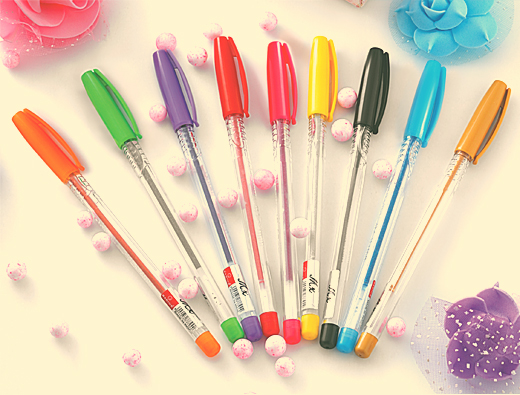UL Listed Fire Protection Systems: Ensuring Safety and Compliance
Introduction
Safety is paramount in today’s complex built environment. Underwriters Laboratories (UL), a globally recognized safety certification organization, is among the key players ensuring this safety. UL certifies products and systems that meet stringent safety standards, providing confidence that these systems will perform effectively in critical scenarios.
One essential category of UL listed certifications pertains to fire protection systems. UL-listed fire Protection Systems play a crucial role in safeguarding lives and property by ensuring compliance with fire safety regulations. This guide delves into the various types of UL-listed fire Protection Systems, their applications, and why their certification is vital for safety and compliance.
Types of UL Listed Fire Protection Systems
Fire Extinguishers
Fire extinguishers are the first line of defense in controlling small fires. UL certifies various types to ensure they meet performance and safety standards for different fire classes:
- Carbon Dioxide (CO₂): These extinguishers are ideal for Class B (flammable liquids) and Class C (electrical) fires. They leave no residue, making them suitable for sensitive equipment.
- Dry Chemical: Versatile and effective for Class A (ordinary combustibles), Class B, and Class C fires. They are widely used in both residential and commercial settings.
- Foam: Primarily used for Class A and B fires. They are effective in smothering flammable liquids and preventing reignition.
- Halocarbon Clean Agent: These environmentally friendly extinguishers are suitable for Class B and C fires and are safe for use around electronics and critical assets.
- Water-Type Extinguishers: Best suited for Class A fires. Variants like water mist are also effective on Class C fires due to their non-conductive properties.
Each extinguisher type is rigorously tested to ensure reliability under various conditions, from extreme heat to accidental impacts.
Fire Suppression Systems
Fire suppression systems are designed to automatically detect and extinguish fires, often in specialized or high-risk areas. UL certification ensures these systems meet performance standards for various applications:
- Gaseous Extinguishing Systems: Using gases like FM-200 or CO₂, these systems protect critical infrastructure such as data centers, server rooms, and archival storage.
- Dry Chemical Extinguishing Systems: Effective in industrial settings, these systems rapidly suppress areas with flammable liquids or gases.
- Wet Chemical Extinguishing Systems: These systems, commonly used in commercial kitchens, are designed to handle grease fires and other high-temperature hazards.
- Condensed Aerosol Extinguishing Systems: Suitable for confined spaces, these systems disperse fine particles to interrupt fires’ chemical reactions.
Each system is tailored to protect specific hazard areas, ensuring optimal fire suppression while minimizing damage.
Firestop Systems
Firestop systems are crucial in maintaining the fire-resistance rating of walls and floors by sealing joints and penetrations. UL certification ensures these systems effectively prevent the spread of flames, smoke, and toxic gases.
- Purpose and Applications: Firestops seal around pipes, cables, and ducts that penetrate fire-rated assemblies. They help categorize fires, limiting their spread within a structure.
Joint Systems
Joint systems are similar to firestop systems but focus on expansion and control joints within fire-resistance-rated assemblies. UL Listed joint systems ensure that buildings maintain their structural integrity while preventing fire from bypassing these critical junctures.
Perimeter Fire Containment Systems
Perimeter fire containment systems are vital in high-rise buildings and complex structures. These systems prevent fire from spreading through the building’s exterior and between floors. UL certification ensures their reliability in mitigating vertical fire spread, a critical consideration in modern urban architecture.
Importance of UL Listing
Rigorous Testing
UL-listed fire Protection Systems undergo extensive testing under real-world conditions, including fire exposure, mechanical stress, and environmental factors such as humidity and corrosion. This rigorous process ensures that systems perform as expected when they are most needed.
Certification and Standards
UL certification means a product meets specific performance standards. These standards are often more stringent than those required by regulatory bodies, ensuring higher safety and reliability. UL Listed systems are trusted to provide consistent, effective performance in critical moments.
Compliance and Safety
Regulatory Compliance
Using UL Listed systems helps building owners and operators comply with local, state, and national fire safety codes. These systems are recognized by model building codes, such as the International Building Code (IBC) and the National Fire Protection Association (NFPA) standards.
Enhancing Safety Measures
Beyond compliance, UL certification provides peace of mind. Building owners, operators, and occupants can trust that certified systems will function reliably, contributing to a safer environment. This assurance is invaluable in high-risk settings such as hospitals, schools, and industrial facilities.
Conclusion
UL-listed fire Protection Systems are a cornerstone of fire safety and regulatory compliance. They undergo rigorous testing to ensure reliability, helping to safeguard lives and property. These certified solutions play a critical role in modern fire protection strategies, from fire extinguishers and suppression systems to firestop and joint systems.
Choosing UL-listed products not only ensures compliance with fire safety codes but also provides peace of mind, knowing that your fire protection systems are built to perform when it matters most. Make safety a priority—invest in UL-listed fire Protection Systems for your building today.













Post Comment